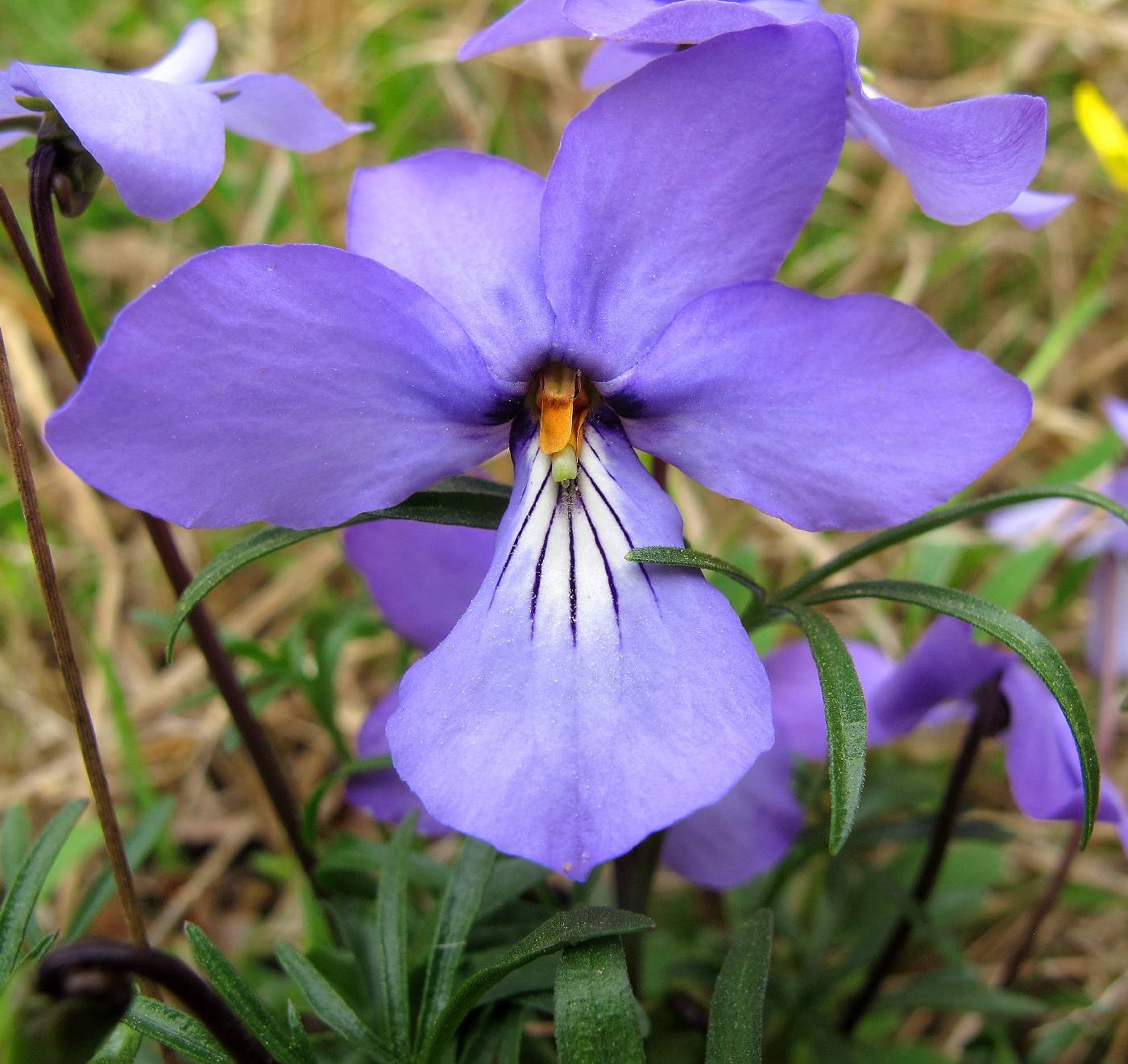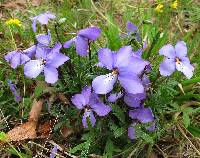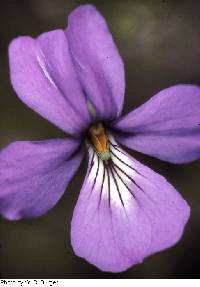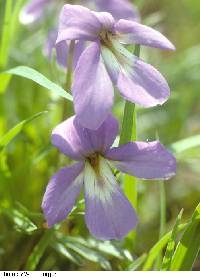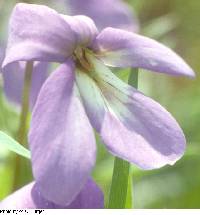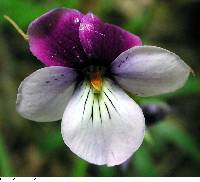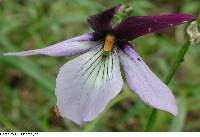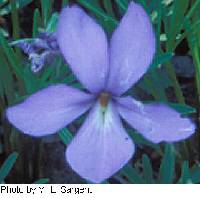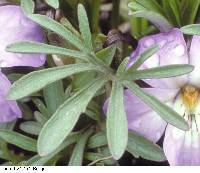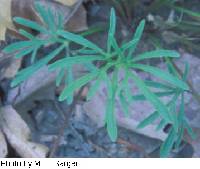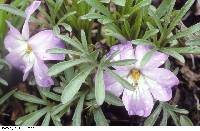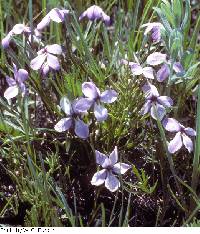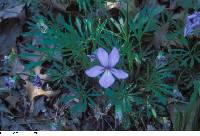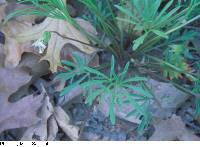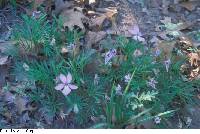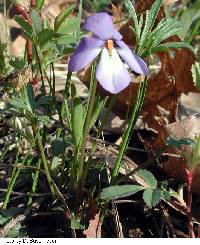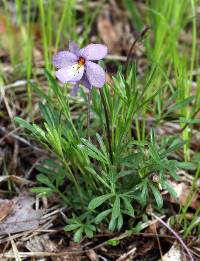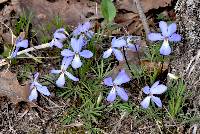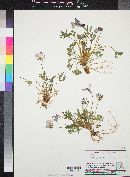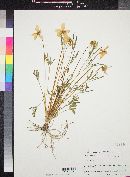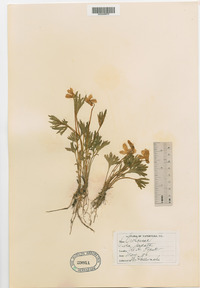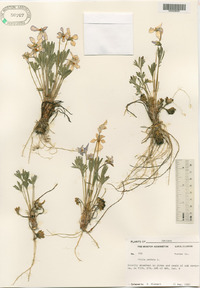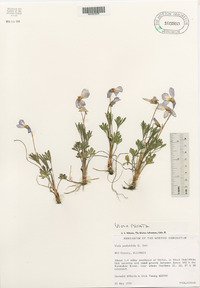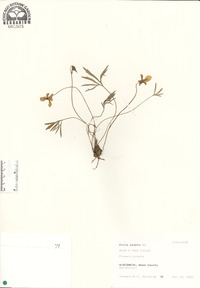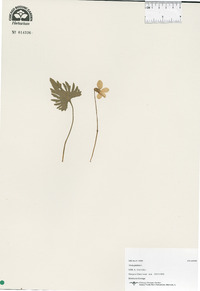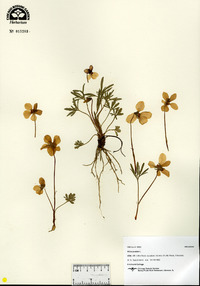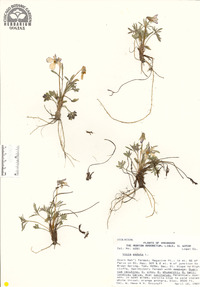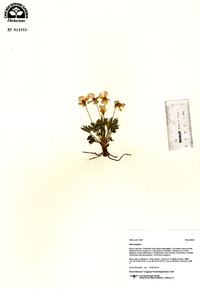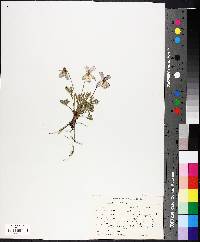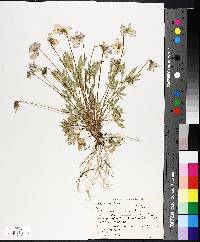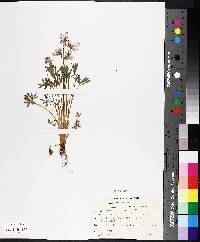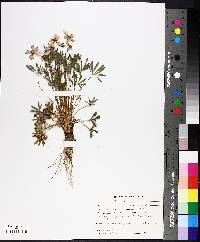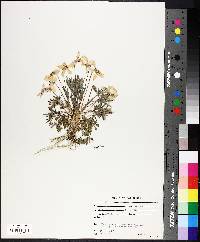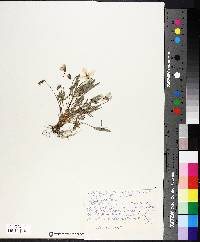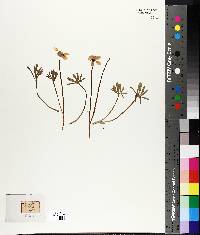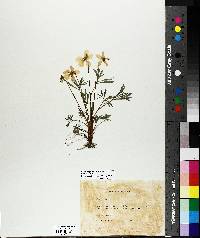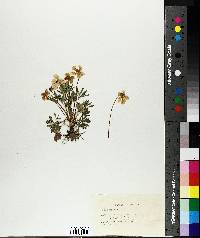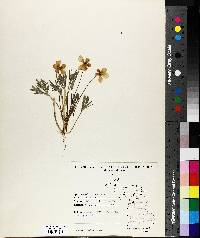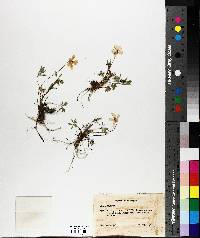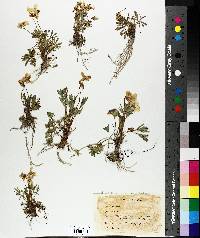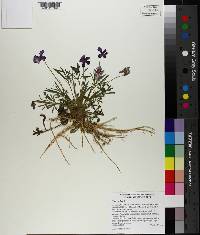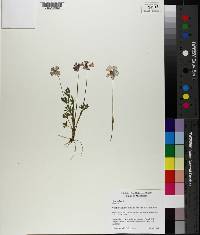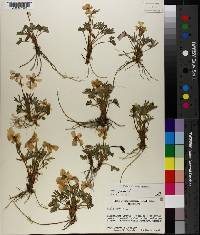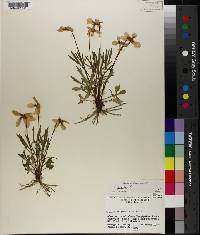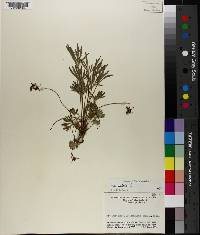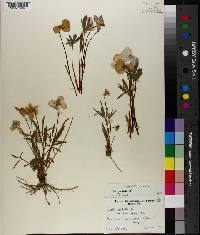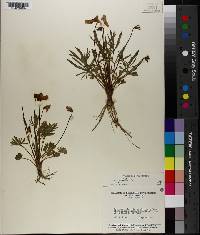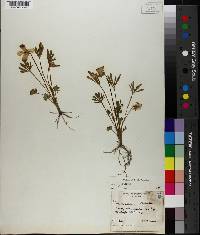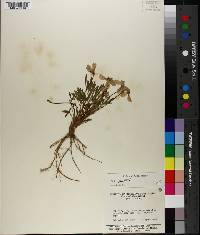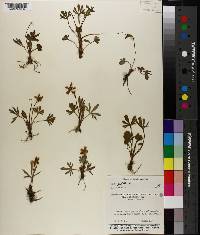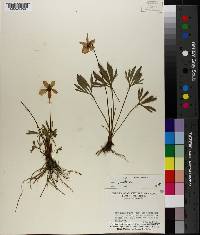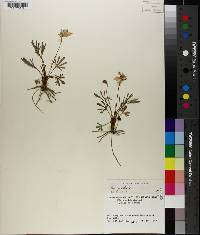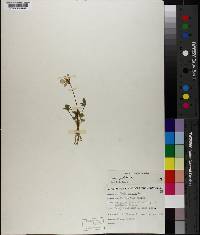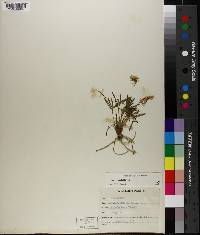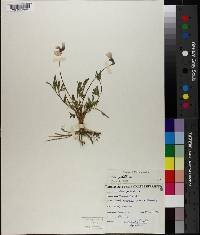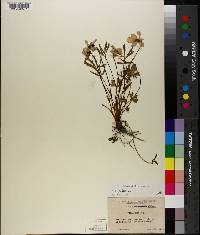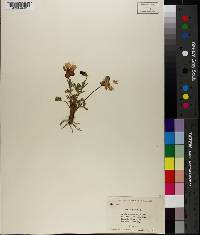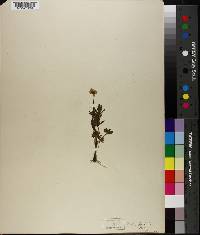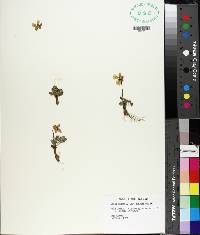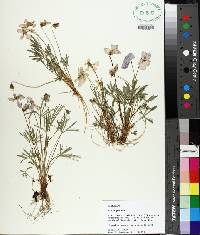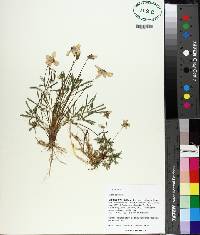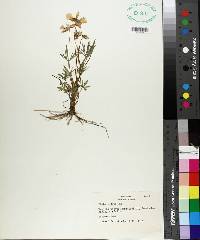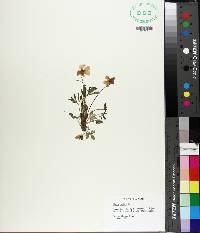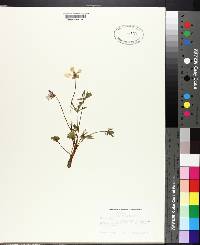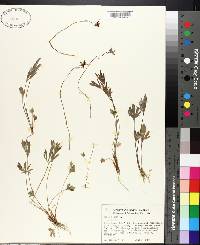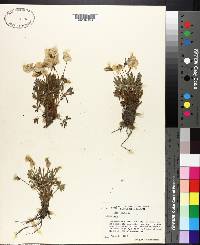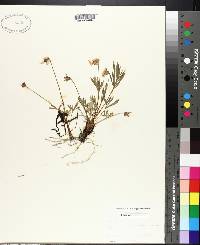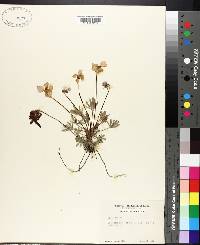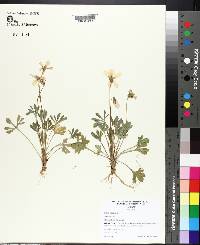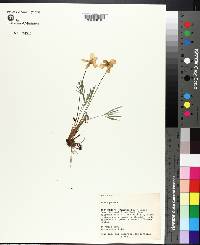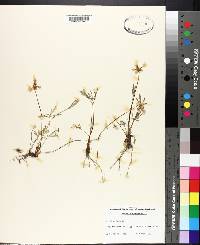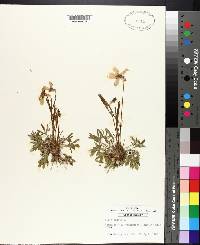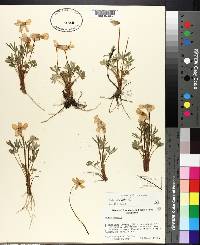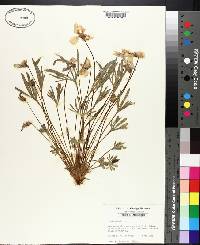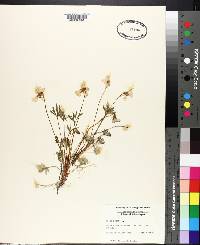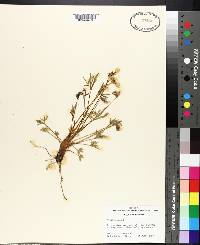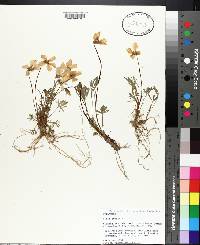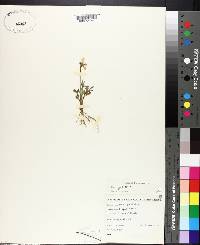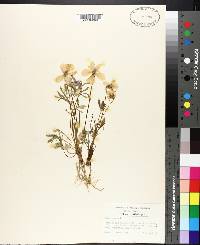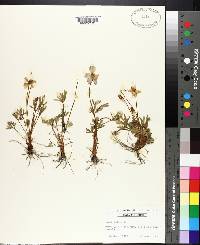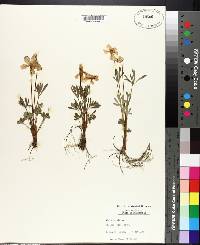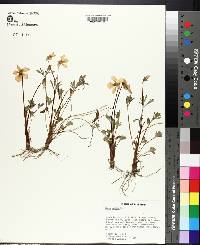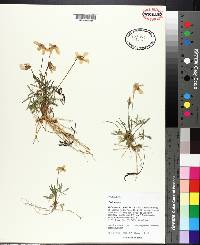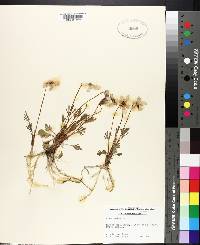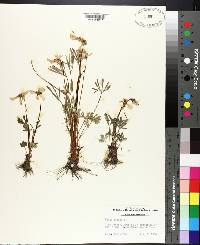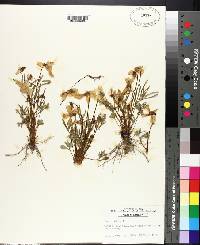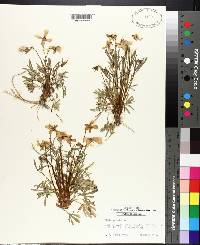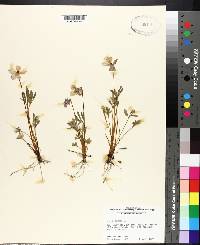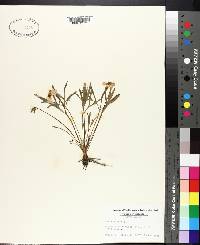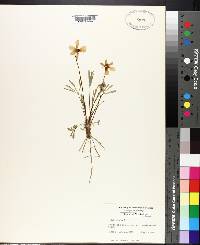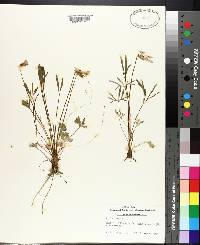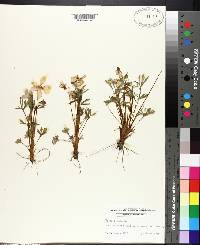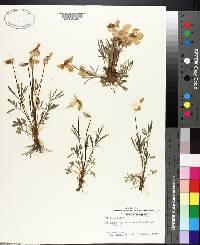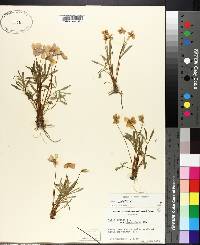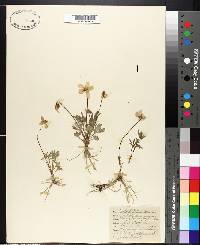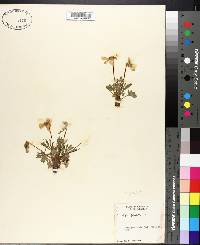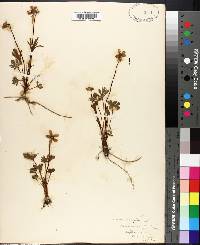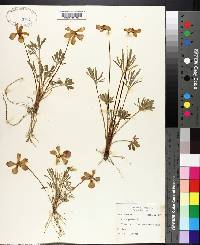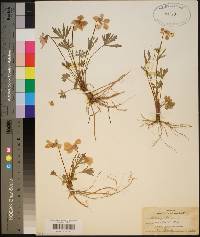
|
|
|
|
Family: Violaceae
Bird-Foot Violet, more...birdfoot violet
|
Perennial herb 8 - 20 cm tall Stem: absent aboveground, leaves and flowers arising independently and directly from a vertical rootstock of thick (over 5 mm diameter), somewhat fleshy, short, barrel-shaped rhizomes, but lacking runners (stolons). Leaves: basal (attached below ground), spreading or erect, long-stalked, mostly hairless, 1.3 - 2.5 cm long, 2 - 3 cm wide, and deeply palmately lobed or dissected into more than three linear segments, with each segment often pointed at the tip. The stipules are green, more than 1.5 cm long, and attached or fused much their length to the leaf stalk. Flowers: long-stalked, light bluish purple, 1.5 - 4 cm broad, bilaterally symmetric with two upper petals, two lateral petals, and lower petal with base modified into a rounded nectar spur. The flowers appear flattened from the front since all five petals are somewhat spreading. Sepals: five, green, over 1 cm long, widely lance-shaped with obvious ear-like appendages (auricles) at the base. Petals: five, separate, all differently shaped, hairless, usually light blue, rarely the upper two dark purple and lower three light blue. The two lateral petals are spreading rather than positioned forward, and the lowest petal is prolonged at its base into a short, rounded spur or sac. Stamens: five, separate, but very tightly arranged so anthers touch as they surround ovary. Although the filaments are very short, the bright orange anthers are obvious and exposed in the flower center. Lower two stamens with spur-like nectaries on back that extend into spur or sac of lower petal. Pistil: with a single-chambered, superior ovary; and a single style that becomes club-shaped near tip with concave area having a small protruding stigma near cavity center. Fruit: a many-seeded, green, hairless, ellipsoid capsule on erect stalks. The capsule opens lengthwise from its top to disperse the copper-colored seeds which have a large amount of oily endosperm, and often an appendage (aril). Similar species: Viola pedata is often confused with V. pedatifida and V. x palmata, but both of those taxa have shorter stipules that are never fused to the leaf stalks, the forward-facing lateral flower petals have hairs at their base, and the anthers are not visible from the front of the flower. Also, neither of those taxa have such thick, barrel-shaped, short rhizomes. Flowering: April to early October Habitat and ecology: Typically found in dry sandy soils such as sandy dune forests or sandy black oak savannas, but also sometimes in black soil prairies. Occurence in the Chicago region: native Notes: This is the only species of Viola native to North America that does not produce viable fruit from self-pollinating, closed (cleistogamous) flowers. There are two different color forms of this species in our area: forma rosea with all five petals bluish, and the typical forma pedata with the upper two petals deep purple and the lower three blue. This bicolored form is very rare in our area, thus most of our material would be named V. pedata forma rosea. Some authorities still prefer to split these color forms into varieties, thus making the common entity in the Chicago Region V. pedata var. lineariloba, but we follow Ballard (1994) who could find no morphological differences between the two color variants. Etymology: Viola is the classical name for the genus. Pedata means "foot-like", usually referring to a bird's foot, and in this case the leaf shape. Author: The Field Museum Acaulescent, with an erect rootstock, not stoloniferous, glabrous or nearly so; principal lvs 3-parted, the lateral segments again 3-5-cleft into linear or lanceolate divisions often with 2-4 teeth near the tip; fls 2-4 cm wide; pet beardless, all lilac-purple, or less commonly the upper 2 dark violet; tips of the large, orange stamens conspicuously exsert; cleistogamous fls none; style clavate, beakless, obliquely concave at the top, the stigma within a small protuberance near the center of the cavity; seeds coppery; 2n=54. Dry fields and open woods; Me. to Minn., s. to n. Fla. and e. Tex. May, June. Gleason, Henry A. & Cronquist, Arthur J. 1991. Manual of vascular plants of northeastern United States and adjacent Canada. lxxv + 910 pp. ©The New York Botanical Garden. All rights reserved. Used by permission. |
|
|
|

